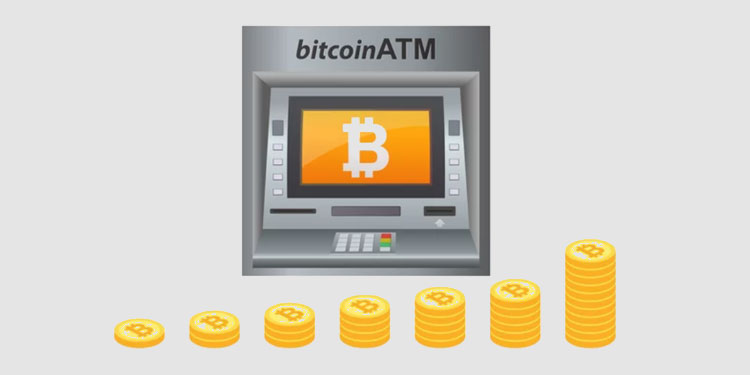Introduction
Legalizing cryptocurrencies in developed nations, such as China and the United States, has resulted in a tremendous shift in the crypto market and the subsequent economy. As per the global market statistics, an estimated expansion of crypto ATMs will be at $75 million, with an expected CAGR of 61.7% in the next 8 to 10 years. In addition, Bitcoin ATMs (Automated Teller Machines) or BTMs (Bitcoin Teller Machines) offer lucrative advantages of ease and complete authority over money transactions without the interference of a designated bank account.
Nowadays, you can find more than 38,609 BTMs set up in over 78 countries. Even certain governments are entering the crypto ATM market by installing 602 crypto operators in public places. If you are interested in finding your local BTMs, visit this website to find your closest Bitcoin ATM. In this article, you will learn the nits and grits of Bitcoin ATMs and other beneficial tips to help you get started:
What Is A Bitcoin ATM?
A Bitcoin ATM, also known as Bitcoin Automated Teller Machine, works essentially the same as regular ATMs but deals with cryptocurrency transactions. Bitcoin ATMs are known as BTMs, which are tangible kiosks. These kiosks provide the purchase and sale of Bitcoins and other cryptocurrencies like ETH (Ether), DASH, and LTC (Litecoin cryptocurrencies).
As regular ATMs operate on debit and credit cards, you may wonder what these repositories’ crypto equivalent is. One exciting aspect of a BTM is the elimination of bank accounts for dealing with transactions. While you may not require these bank-issued cards and other financial institution credentials, you must link your crypto wallet to the BTM to sell and purchase Bitcoin.
How Does A Bitcoin ATM Work?
The popularity of BTMs is ever-increasing due to their effectiveness in replacing online crypto exchange systems. To understand how they operate, let’s first know the two types of ATMs that are available.
- Unidirectional Machines: These machines enable only unidirectional transactions. Such transactions in the form of selling and purchasing of Bitcoin are enabled in these systems.
- Bi-directional Machines: Bi-directional teller machines facilitate the purchase and sale of cryptocurrencies.
Strong internet access is essential to power the crypto exchange transactions in the form of cash as they utilize public key blockchain technology for encryptions. You are required to verify your identity through Bitcoin wallet credentials; doing so becomes imperative in heavy transactions.
The unique aspect of BTMs enables them to work on blockchain systems instead of standard digital currency ATMs. The complete transaction receipt is processed to your mobile device. While they are not under the jurisdiction of any governmental financial organization, they adhere to government regulations and provide complete authority.
Step 1: Enter Your Phone Number
Identity verification is indisputably essential evidence that guarantees authorization to all the transaction parties. It is done through a 2-step verification based on mobile numbers. While crypto runs on anonymity, adhering to KYC and AML compliance regulations is essential. Certain ATMs may require a government-issued ID card to enable verification. Subsequently, you can verify your identity by typing in the code prompt in your SMS messages.
Step 2: Scan Your Wallet Address
Every user has a unique address where BTC transaction takes place. A Bitcoin address can be issued through paper wallets, applications, or exchange addresses. This QR code is the repository for your exchange address, which is communicated to the BTM for transacting BTC. Always contact your wallet providers during uncertainty.
Step 3: Insert Your Fiat Currency
This step is similar to a traditional ATM. Insert fiat currency in the ATM receptacle. Prompt messages will also notify you of the amount you will be exchanging for crypto. After checking the inserted amount, click “confirm” and proceed with the transaction. The duration of crypto purchase processing ranges from 10 minutes to 1 hour, and this is due to the 6-network-confirmation for reflecting and updating your Bitcoin wallet.
The coins purchased will be delivered to your address via QR codes in the earlier step.
Final Thoughts
BTMs are a more efficient and convenient solution than traditional online crypto exchanges. Moreover, these transactions do not demand physical copies or card repositories to facilitate the trade while adhering to the operating territory’s legal regulations. Also, ensure that you optimally research Bitcoin ATMs near you to gauge the ones that charge low fees. This comprehensive guide offers a simple way to transact cryptocurrencies through the innovative solutions mentioned above.
